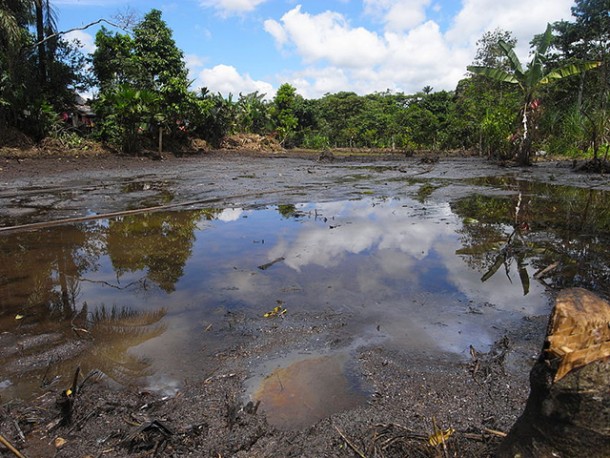In 2008, Ecuador seemed to have come to new life. After years of political, financial and environmental struggles, a fresh Constitution was approved by the electorate, boasting several shining breakthroughs: as the Right to Food, labelled as Food Sovreignity, or, for the very first time in history, the legally enforceable Rights of Nature, patrolling the immense natural resources of the nation. Ecuador is indeed one of the seventeen “Megadiverse Countries”, a group identified by Conservation International as the countries which provide refuge to the most complex biodiversities on Earth. Nevertheless, oil was discovered in Ecuador during the 1960s. Since then, drillings, toxic waste, bribery and international lawsuits have tainted this lush corner of the globe.
A Sticky Situation
- 1964: Texaco Petroleum Company (TexPet) began exploring for oil in northeast Ecuador, in an area which was inhabited by indigenous people. The following year it started operating a consortium owned equally by itself and Gulf Oil, to develop a tract in the area;
- 1974: the Ecuadorian government, through its national oil company CEPE, now Petroecuador, obtained a 25% interest in the consortium. Gulf subsequently sold its interest to CEPE. By 1976, the consortium was majority-owned by the Ecuadorian government;
- 1993 (I): after have transferred management of the consortium to Petroecuador in 1990, TexPet’s concession expired in 1993, leaving Petroecuador as the sole owner. The transfer of ownership was due to political policies within Ecuador limiting foreign ownership as well as the decision not to re-new the contracts;
- 1993 (II): American lawyer Steven Donziger for the indigenous residents of the Lago Agrio field sued Texaco in New York. The 30,000 member class-action lawsuit accused TexPet of discharging produced water into open pits, contaminating the water that was used by the locals for fishing, bathing, and drinking;
- 2003: Blocked from suing Texaco in US courts, the plaintiffs filed their case in Ecuador;
- 2008: A court-appointed expert issued a report accusing Texaco employees of not only widespread pollution, but deforestation and cultural destruction as well. The report estimated the damages by TexPet between $8 billion and $16 billion, which the expert later increased by $11 billion;
- 2011: A local court in Ecuador ordered Chevron Corporation to pay $18.1 billion, but was later reduced to $9.5 billion by the Ecuador Supreme Court;
- 2012: Since Chevron doesn’t actually hold any assets in Ecuador, Steven Donziger and his team have tried to enforce the judgment by going after Chevron’s assets around the world, including Canada, Brazil and Argentina;
- 2014: The “U.S. District Court for the Southern District of New York” found that Donziger corrupted the Ecuadorian case by submitting fraudulent evidence, coercing the judge, paying off a supposedly impartial expert, paying a Colorado consulting firm to write the expert’s report, falsely presenting the report as the expert’s own work, bribing the judge to give a ruling against Chevron and then trying to mislead the US courts. To date, appeals are still under review.
To dig the well deeper, watch the short documentary “The True Story of Chevron’s Ecuador Disaster“.
In the meanwhile trials are spreading around the world, other developments unfolded in Ecuador.



